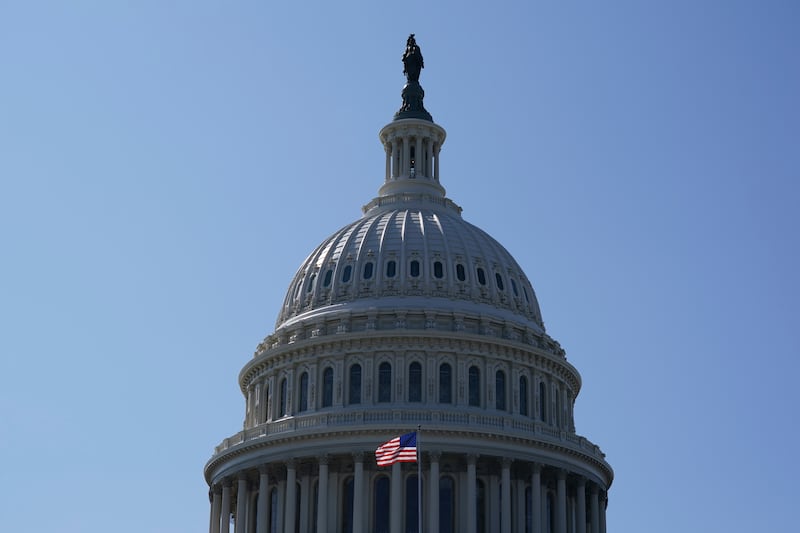WASHINGTON — The Senate unveiled text of its budget blueprint on Wednesday, marking the next step toward drafting President Donald Trump’s massive tax reconciliation bill. But there’s still a long way to go.
The Senate-based resolution closely mirrors the one that has already passed out of the House, detailing plans to raise the debt ceiling while advancing a number of Trump’s priorities on the border, national defense, and energy.
“Today is one of the most important steps toward ensuring the Republican majority fulfills its promise to the American people that we will secure our border, strengthen our national security, make President Trump’s tax cuts permanent, and reduce spending,” Senate Budget Chair Lindsey Graham said in a statement on Wednesday.
However, the resolution differs from the House-passed version in some ways, meaning it will need to go back to the lower chamber for approval before lawmakers can begin drafting the full package. Both chambers must pass identical versions of the bill before they can get to work on the full package.
That could prove to be a heavy lift for House GOP leadership as it was no easy task the first time around to get all factions of the Republican conference on board.
Republican leaders are hoping to get the blueprint approved by both chambers before Congress adjourns for a two-week Easter recess.
What’s in the Senate reconciliation blueprint?
The latest budget blueprint combines components of the Senate’s initial budget resolution passed in February and the House’s resolution passed last month.
Most notably, the Senate iteration would make the tax cuts in Trump’s Tax Cuts and Jobs Act of 2017 permanent — something the House resolution did not do but became a redline for several Senate Republicans. The resolution does so by utilizing an accounting maneuver known as a current policy baseline to make the cost of such extensions amount to $0.
The Senate resolution would preserve instructions for House committees while giving committees in the upper chamber slightly different instructions to draft their portions of the reconciliation bill. That decision was made as part of a “pass now, agree later” strategy by Republican leaders to get a headstart on the tax cuts package, leaving any negotiations for later in the process.
Overall, the Senate blueprint calls for just $4 billion in spending cuts, far below the $1.5 trillion marker in the House budget. However, Senate leaders say that number acts as a minimum target to allow for more flexibility in the process.
The Senate instructions also differ by providing the Finance Committee an additional $1.5 trillion to go toward Trump priorities, namely eliminating taxes on tips.
The Senate resolution includes a $5 trillion increase in the debt ceiling, which comes in above the $4 trillion increase in the House blueprint. That could be tricky to sell to some fiscal hawks in the House, but Graham is justifying the number by saying it helps to punt the issue until well past the 2026 midterm elections and doesn’t require negotiations with Democrats.
The blueprint pulls from the initial Senate budget resolution in February to include about $175 billion to go toward border security and another $150 billion in defense spending.
What’s next?
The Senate is expected to begin debate on the blueprint on Thursday or Friday, setting the stage for a marathon vote series known as a vote-a-rama this weekend.
Because of reconciliation rules, it will only require a simple majority to advance in the Senate. That means Republicans won’t need to rely on Democrats, who are expected to reject the blueprint in full.
“Republicans blowing up our national debt to dole out massive tax cuts for billionaires is nothing new, but their attempt to use a ridiculous budget gimmick to try and evade longstanding budget rules and pretend their billionaire tax giveaways are somehow free is some next-level stuff,” said Sen. Patty Murray, the top Democrat on the Senate Appropriations Committee.
Once it passes the Senate, it will head back to the House where it will need near-unanimous support from Republicans to advance the chamber. After that, lawmakers can get to work on drafting the full reconciliation package — something GOP leaders are hoping to get done before Memorial Day.


